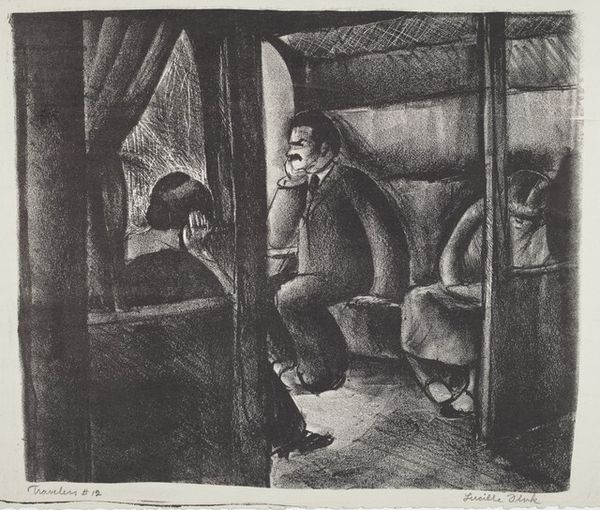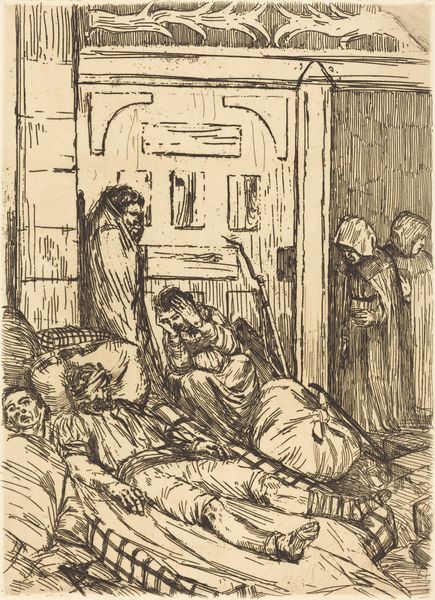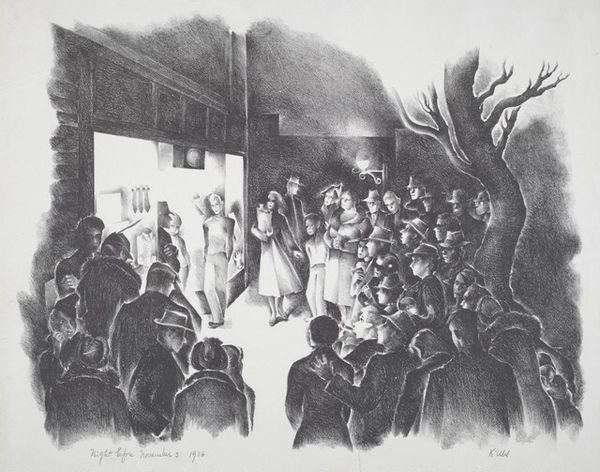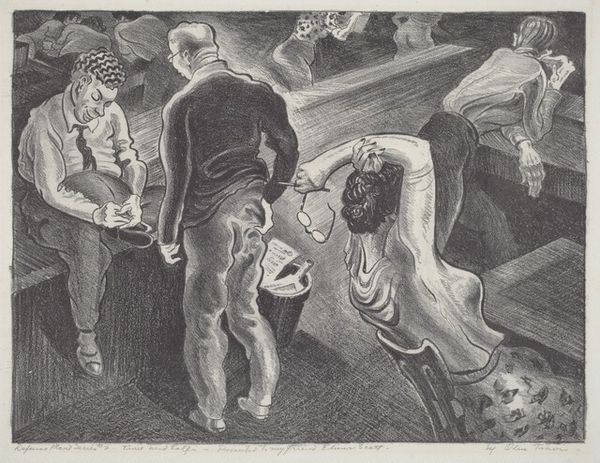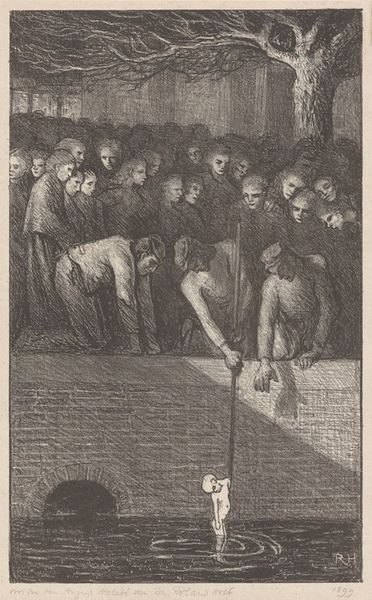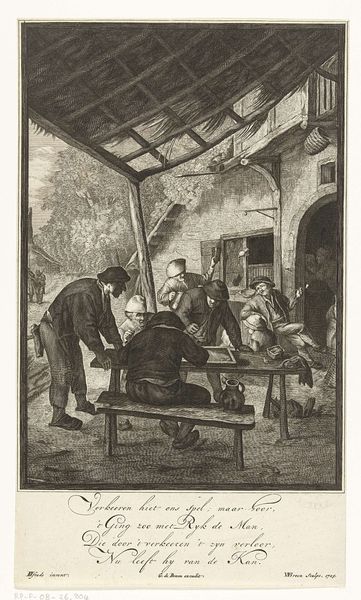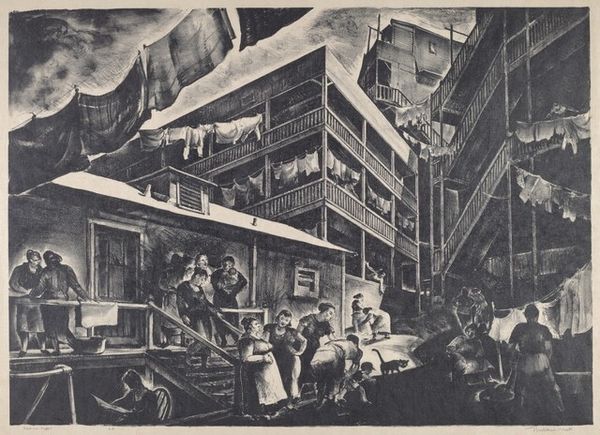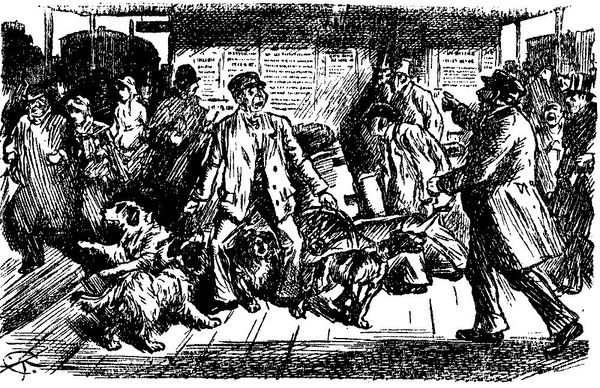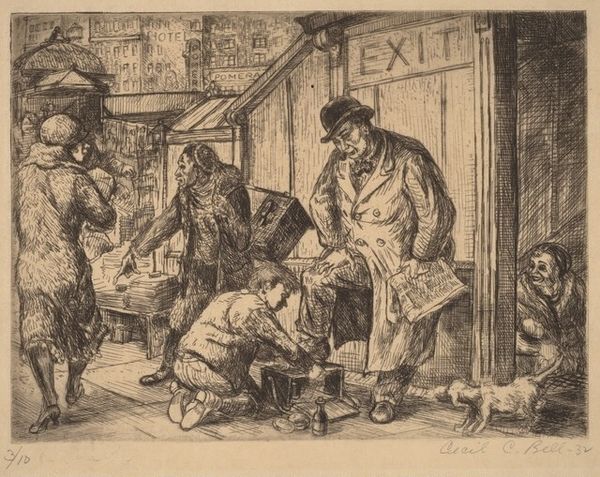
#
wedding photograph
#
photo restoration
#
wedding photography
#
death
#
pencil sketch
#
old engraving style
#
charcoal drawing
#
charcoal art
#
unrealistic statue
#
pen-ink sketch
#
pencil art
Copyright: Public domain
Curator: Kathe Kollwitz's etching from 1897, "The End," currently housed at the British Museum, immediately strikes me as desolate. What are your initial thoughts on it? Editor: The stark blacks and whites lend themselves well to the somber mood of this print. It gives the immediate impression of toil, labour and frankly, not much reward. You can practically smell the dust and sweat ingrained in those coarse linens, no? Curator: Indeed. Formally, the composition guides our eye downwards. The strong vertical lines of the looming loom and the figures entering the room press down on the horizontal figures on the floor, reinforcing a sense of oppressive finality. Editor: Absolutely, and you cannot forget the material conditions implicit in Kollwitz’s choice of etching! It’s such a physically demanding, painstaking method. One wonders what social statement she may have been making on the sweatshops of the late 19th Century. The weaving is central, visually. How interesting that the act of production and industry looms largest here in "The End." Curator: Precisely, the very material of existence is both physically present as well as structurally paramount to this piece. Semiotically, "The End" evokes closure, punctuated by harsh angles and unforgiving linearity. It offers little hope for vertical transcendence. The figures by the door imply there are perhaps, only harsher cycles to endure, and certainly a death. Editor: And that cyclicality speaks to the nature of labour itself, wouldn’t you say? These are images of people making, providing material sustenance, under circumstances that are literally and metaphorically crushing. They return back to the material from whence they came. There’s something perversely satisfying and damning to its process. Curator: An incisive point. There is a compelling sense of immanence. Thank you. Editor: Likewise, it seems that the dialogue of labor's materiality has cast into sharp relief the form of things and people.
Comments
No comments
Be the first to comment and join the conversation on the ultimate creative platform.


